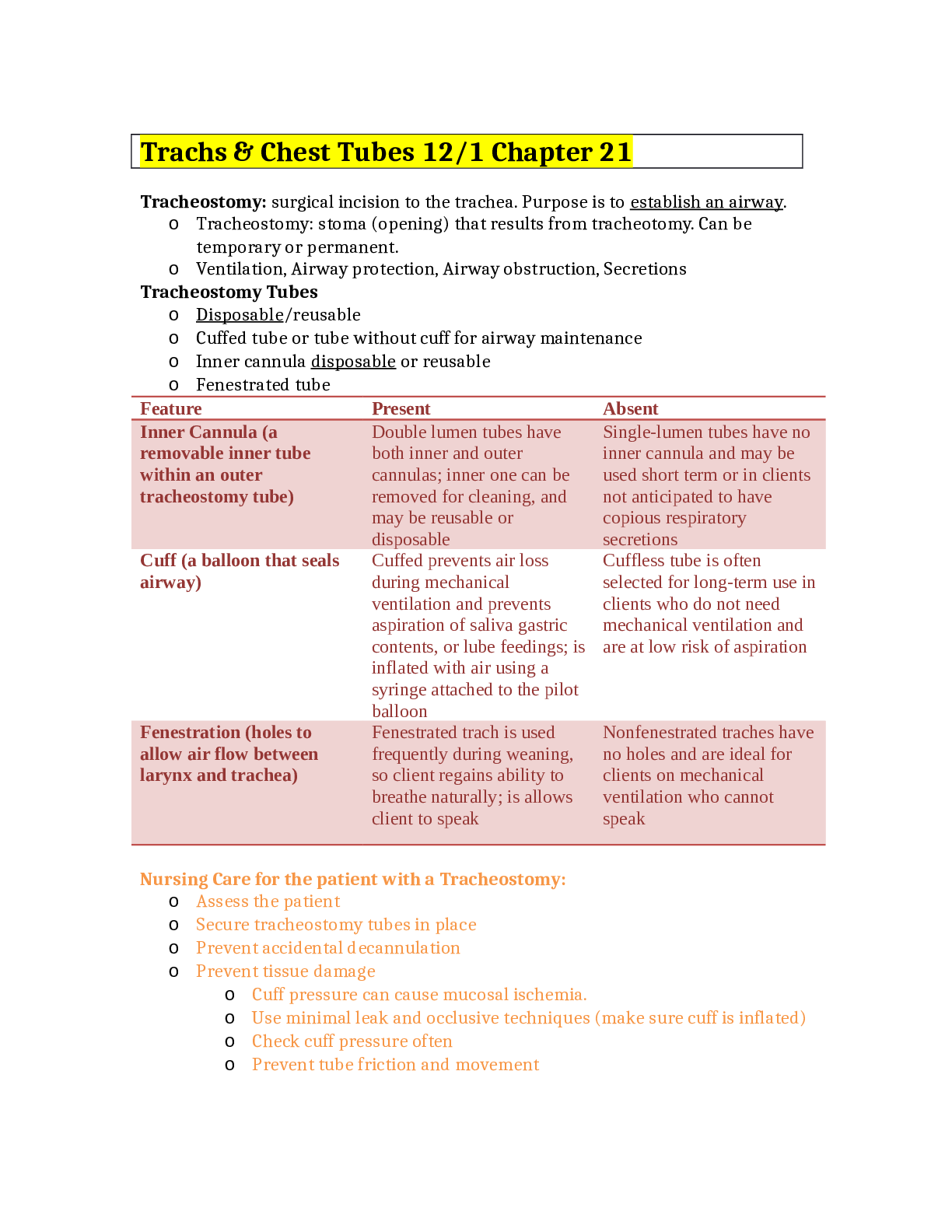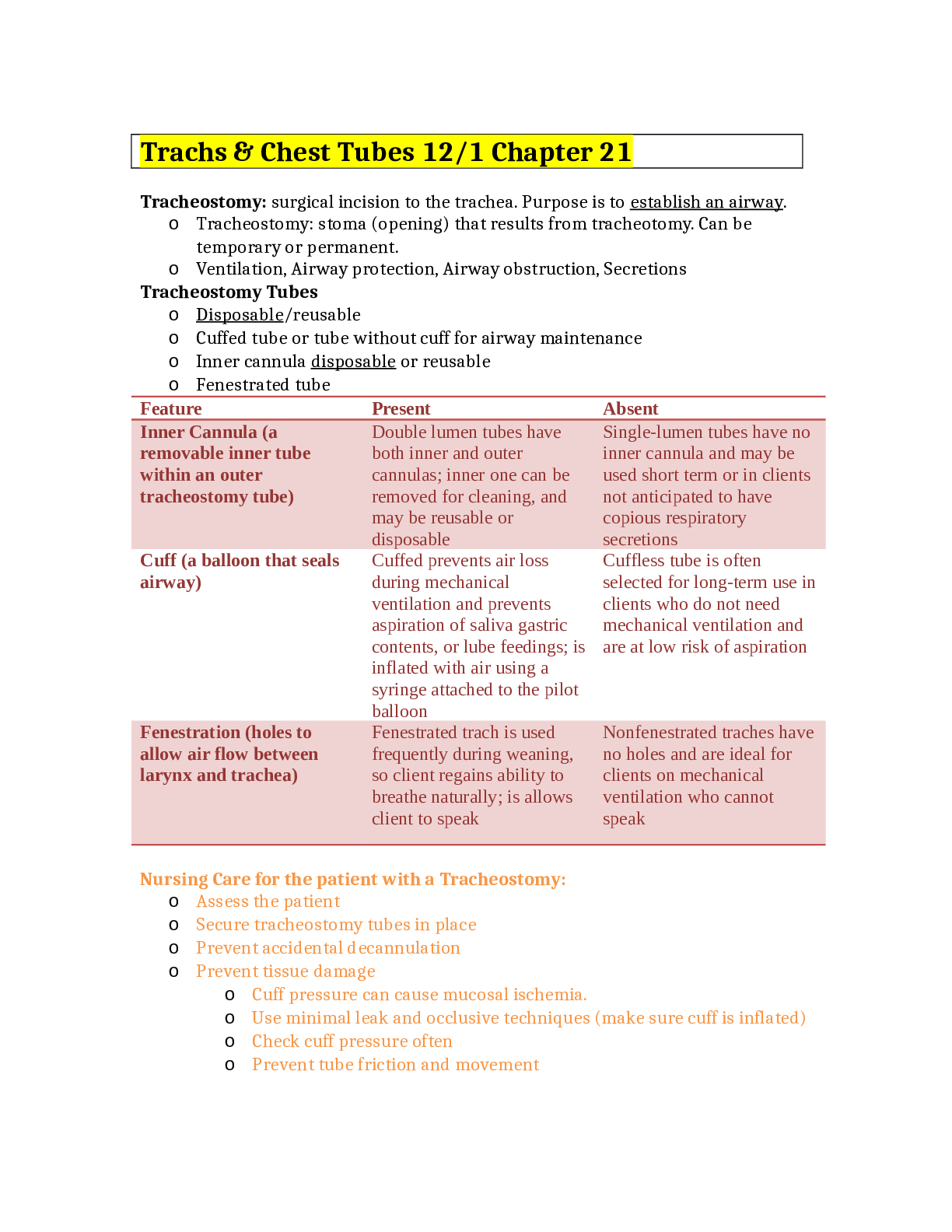Trachs & Chest Tubes 12/1 Chapter 21
Course
Education
Subject
Chemistry
Category
Study Guide
Pages
10
Uploaded By
ATIPROS
Preview 2 out of 10 Pages


Download all 10 pages for $ 8.50
Reviews (0)
$8.50
